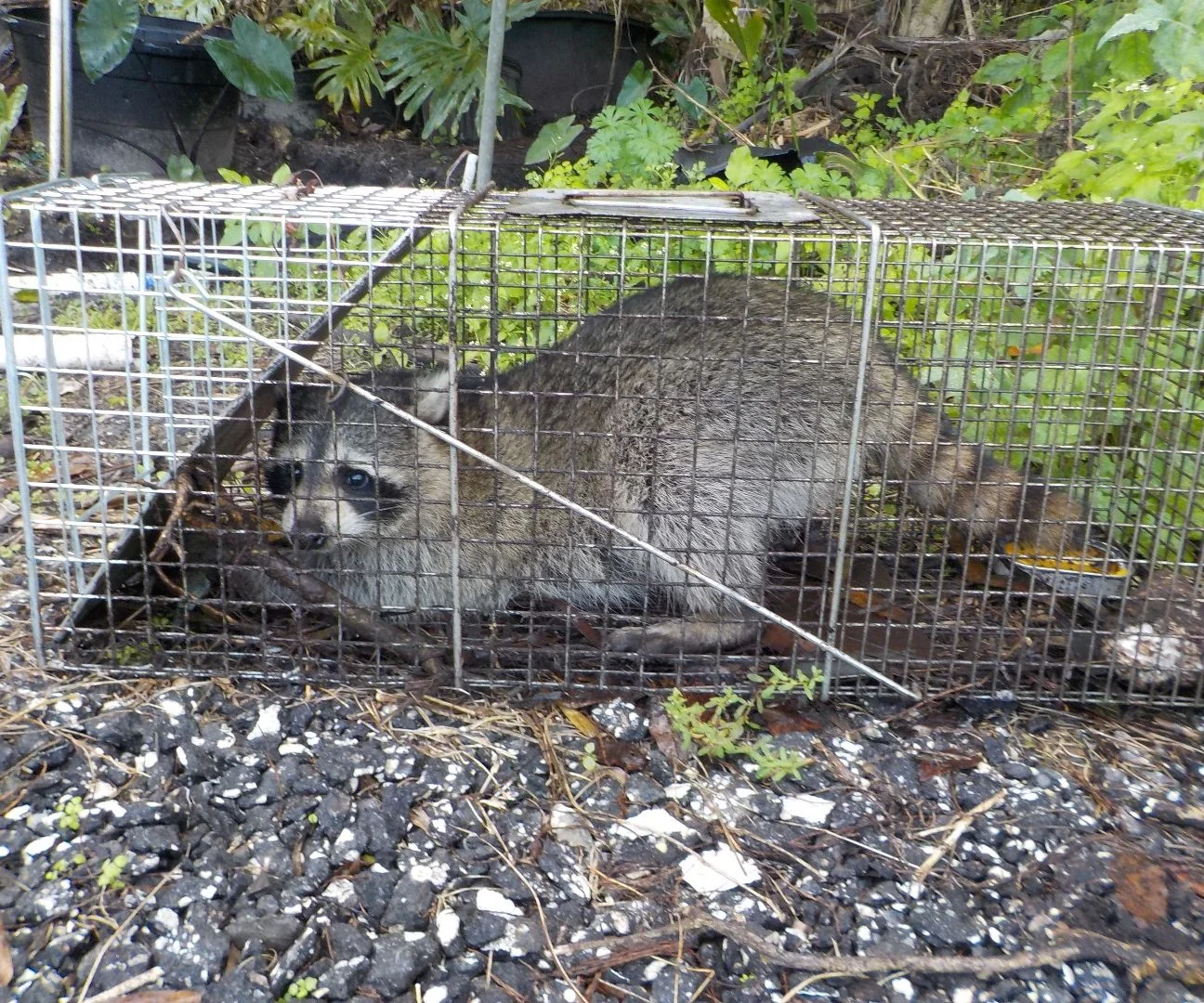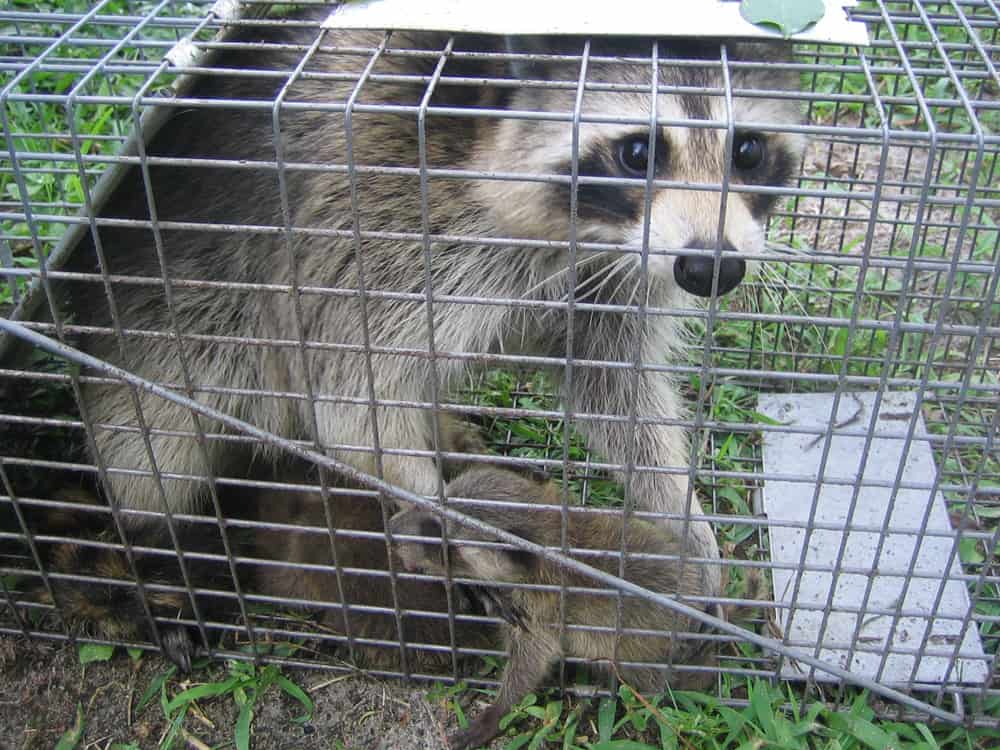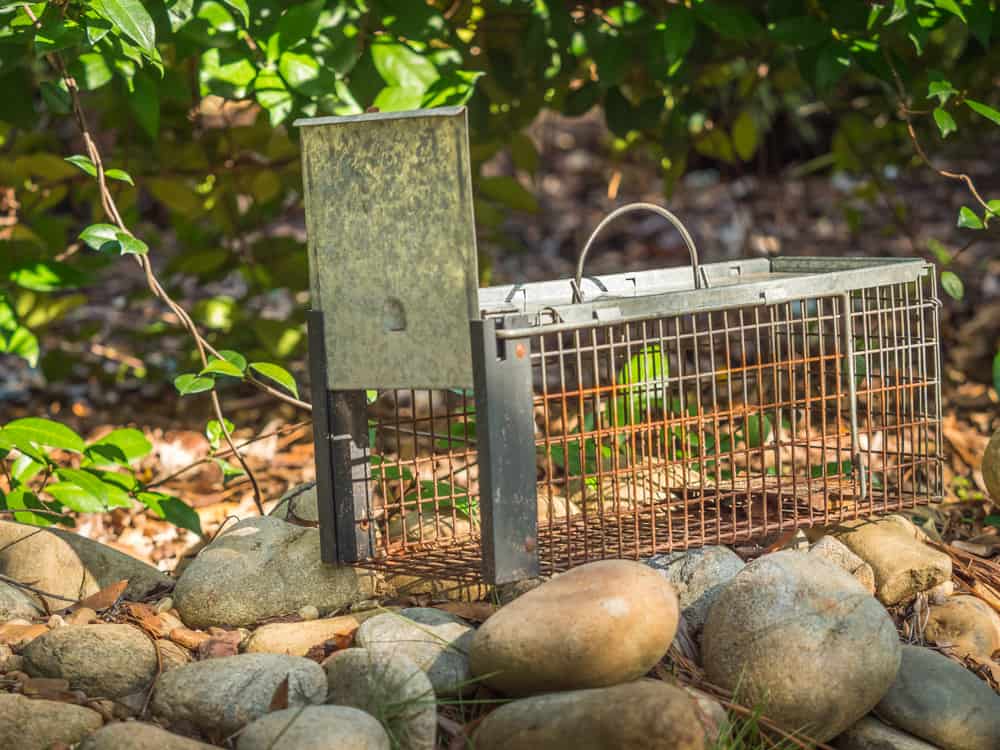Dealing with raccoons and other critters rummaging through your garbage cans is usually easy – all you need to do is get raccoon-proof trash bins and the pests will have to move on and find a new food source elsewhere.
What do you do when the place they’ve decided to move to is your attic or crawlspace, however? Making attics and porches raccoon-proof is much trickier, especially once the animals start setting up nests and breeding. In such a situation, it’s time for some more serious measures.
A lot of folks get tempted to bust out the rat poison at that moment but that’s often a very bad idea for various reasons – namely that it’s ineffective, usually dangerous for your family and pets, as well as illegal in most places. Fortunately, there are much easier tricks for how to catch a raccoon easily and safely – live traps.
How to catch a raccoon?
Given how surprisingly large, fast, agile, and smart raccoons are, not to mention how aggressive they can get when they are cornered, trapping them can sometimes be tricky. We hopefully don’t need to tell you to wear protective equipment such as gloves, a thick coat and pants, face protection, and so on, but what about the actual trapping?
Well, there are several steps you’d be wise to follow. Doing those properly – especially the first couple – ensures that you won’t just be successful with catching your furry pest but that you’d be quite safe while doing so too.
1. Use the right type of trap
Not all traps are created equal. For one, there are many different types – a trap door cage trap, a trap with a trip pan or a trigger plate, and so on. More important for the solution to your raccoon problem, however, is the quality of the trap.
Assuming that you’ve got a trap of the right size and with a working mechanism, it also needs to be durable enough so that a panicked and even raging raccoon isn’t able to break its hinges or chew through its wire.
2. Location, location, location
In trapping raccoons as in marketing, the location you choose to use is one of the most important factors for success. Correct trap placement around raccoons’ nests, food sources, dens, preferred paths such as fence lines or vents, as well as other shelter options, and more is key for a successful capture and removal.
More than that, however, it’s also important that the trap’s placement is such that non-target animals (skunks, opossums, your neighbor’s pets, etc.) don’t get captured – that’d be unfortunate for the animal, a waste for you, and freedom for the raccoon.
The next part of this point is that you should always do your best to “guide” the raccoon to the trap. This means not only putting the trap in the right place but also blocking off different locations and exits the raccoon might use instead – this way you maximize the chance that it notices the trap and walks into it.
3. Give the raccoons some time to get familiar with – and comfortable around – the trap

A huge mistake a lot of homeowners make is not just baiting the traps immediately but also trying to spring them right away. Raccoons are smart animals – much more so than we often give them credit for – and they have long memories.
So, if a raccoon has nearly been caught by a trap before, it will remember it as such and avoid it in the future. This means that you need to make sure your first attempt is always successful otherwise you likely won’t get a second, at least not with the same animal.
In other words, the best approach is to first set the trap in the right place, bait it, and let the raccoons walk in and out freely, eat the bait, and get used to the presence of the trap. Then re-bait the trap a few more times and keep letting the raccoons walk in and out. After a day or two, load the trap properly and it will almost certainly be successful.
Another tip is to use different types of traps if you want to set more than one – this way you’ll circumvent the raccoon’s good learning skills.
4. Bait it properly
The right raccoon lures must always have a very strong scent and be as delicious as possible – otherwise, the animal will just walk past them and look for something tastier elsewhere. We’ll give some examples further below.
5. Check the trap regularly
The last step a lot of people skip is checking the traps as frequently as possible. This is key for two reasons: 1) it gives the trapped raccoon less time to break the cage and escape, and 2) it gives the other raccoons nearby less time to examine the trap and recognize it as such. It’s also smart to use cameras to further help you monitor the traps once you’ve set them.
What is the best bait for raccoon traps?

Raccoons are omnivores, so, fortunately, trying to bait raccoons is quite easy – you don’t need any specialized and expensive bait or anything too particular. As long as the bait is delicious and as smelly as possible, it will almost certainly work.
We do emphasize on “delicious and smelly”, however – as expert scavengers, raccoons are quite good at finding stuff to eat. So, you’ll have to make sure that the bait you’re using isn’t just edible but it’s more enticing than anything else the raccoons have access to – otherwise, they’ll still notice it but may ignore it for something yummier in the neighbor’s trash can. Here are a few suggestions:
1. Pet food
Wet cat food is usually the best way to bait a raccoon with wet dog food being a close second. It is important that the food is wet and isn’t kibble, as well as that it’s as smelly as possible. Stinky and oily meats are among raccoons’ favorite foods so this should always do the trick.
2. Bacon or fatty meat
Going off of the above point, if you don’t have cat food on hand but you’re willing to part with some of your own bacon or other fatty meats from the fridge, this will also work well. Still, given that baiting raccoons is usually a multi-day process, it’s worth it to get a can of cat food instead of wasting your bacon.
3. Marshmallows
Sweet and chewy foods also rank very high on raccoons’ wishlists and few foods are sweeter or chewier than marshmallows. So, setting a couple of marshmallow pieces per trap is often more than enough.
4. Uncooked eggs
When they are not rummaging through people’s trash, raccoons are expert bird egg poachers. So, if you just put a raw chicken egg inside the trap, the raccoons are almost certain to notice it.
5. Fruits
Another sweet and chewy food raccoons would easily recognize are fruits. Like uncooked eggs, this is a very common food for them in the wild so there’s little risk that they’d miss it.
6. Corn on the cob
Sweet corn also has everything a raccoon wants from a snack so that’s a very easy, simple, and effective bait to use too.
7. Honey- or sugar-coated vegetables
If you want to get fancier, you can get a few veggies and dip them in honey or sugar. This isn’t most people’s first intuitive solution but it’s more than enticing enough for raccoons.
8. Smelly fish
Back to the smelly and fatty meats, a can of stinky fish such as sardines or tuna can also be incredibly effective, although we often don’t feel like parting with such a treat ourselves.
What to do once you’ve caught the raccoons?

So, you’ve finally caught the pesky pest in a live trap – what now? There generally are two main courses of action – killing or relocating the animal.
In the United States, killing a raccoon usually requires a permit unless you can prove that the animal was actively damaging your property or your domestic animals – not merely that you were afraid it may do so.
This means that relocating the captured raccoon to the wilderness is usually the better – as well as more humane – option. However, there are also often laws against relocating raccoons in certain states because of fear of spreading rabies to the local wildlife.
So, once you’ve caught the troublesome raccoons on your property, the first step is to check out your state’s laws to see what your best option is. There are also lots of professional services for trapping, euthanizing, and/or relocating raccoons properly.
In conclusion
Dealing with a raccoon nuisance is usually annoying and time-consuming but few things work better, safer, and more easily than a live cage trap. This isn’t to say that you can’t fail with such a trap, however – you certainly can.
The most common issues that arise when trying to trap raccoons are two: 1) the raccoons ignored the bait or 2) they broke out of the trap. This is why it’s important to always get the right trap, position it properly, and then entice the raccoons to get in the right way. Following the six steps above to the letter should almost always lead to success. If not, you can always look for professional help in your area.
